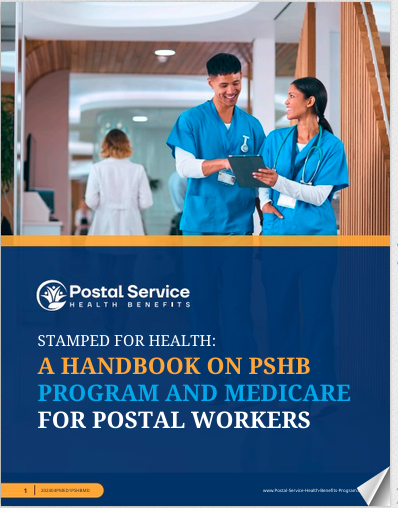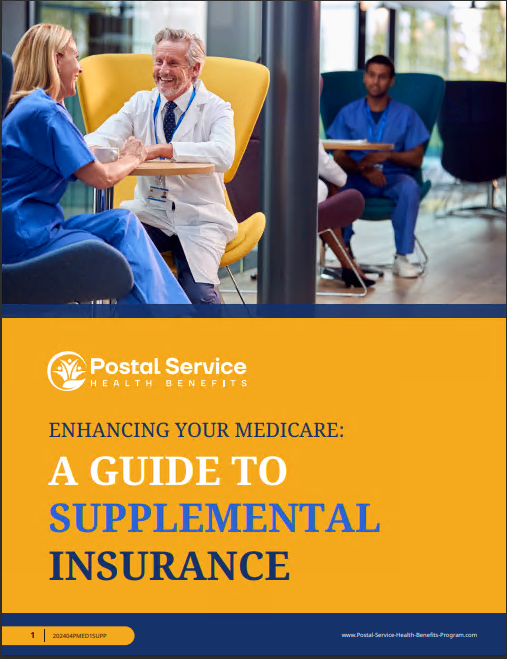Key Takeaways
- Postal employees must carefully assess their health benefit needs, focusing on both current coverage and potential future changes to avoid costly mistakes.
- Evaluating all available options under the Postal Service Health Benefits (PSHB) Program ensures postal employees make informed decisions about their 2025 health benefits.
What Postal Employees Should Avoid When Picking Their Health Benefits for 2025
As we approach 2025, postal employees face an important decision regarding their health benefits. This year marks significant changes in
health coverage options, particularly with the introduction of the Postal Service Health Benefits (PSHB) Program, which officially starts on January 1, 2025. The choices made during this period will affect not only employees’ immediate
healthcare needs but also their long-term financial and medical security. To make the most informed decisions, postal employees must be aware of potential pitfalls and mistakes that could lead to suboptimal coverage or higher costs. This article explores key considerations and common mistakes to avoid when selecting health benefits under the PSHB for 2025.
Failing to Understand the Postal Service Health Benefits (PSHB) Program
The Postal Service Health Benefits (PSHB) Program, launching in January 2025, is a major shift from the current Federal Employees Health Benefits (FEHB) Program. Unlike the FEHB, which covers all federal employees, the PSHB is tailored specifically for
postal workers. It is crucial for postal employees to understand the distinctions between these programs, as PSHB is designed to address the unique needs of postal workers.
One major error postal employees could make is assuming that the PSHB will function exactly like the FEHB. This assumption could lead to misaligned expectations, especially regarding premiums, coverage networks, and out-of-pocket costs. Postal employees should take the time to thoroughly review the PSHB plan details and compare them with their current
FEHB plans. This comparison should include checking whether their preferred healthcare providers are in-network and understanding any changes in
prescription drug coverage.
Overlooking Potential Changes in Health Needs
Another common mistake is failing to consider how future health needs may evolve. Many employees choose their health benefits based solely on their current health status without anticipating future changes, such as aging, potential chronic conditions, or changes in family status. For instance, a younger employee in good health might opt for a plan with lower premiums and higher out-of-pocket costs. However, as they age or if they plan to start a family, their healthcare needs could increase, making such a plan less cost-effective in the long run.
Postal employees should assess their health benefit options with a forward-looking perspective, considering potential life events that might require more comprehensive coverage. This could include choosing a plan with lower deductibles or broader coverage options, even if it means paying a slightly higher premium. The key is to balance current affordability with future security, ensuring that the chosen plan will continue to meet healthcare needs over time.
Ignoring the Impact of Prescription Drug Coverage Changes
Prescription drug coverage is another critical area where postal employees might overlook significant changes. With the transition to the PSHB, there may be differences in how prescription drugs are covered, including changes in formularies, co-pays, and the availability of certain medications. Ignoring these changes could result in higher out-of-pocket costs or reduced access to necessary medications.
It is essential for postal employees to review the prescription drug coverage offered by their new PSHB plans in detail. This review should include checking if current medications are covered and whether there are any restrictions, such as prior authorization or quantity limits. Employees should also consider the possibility of needing new medications in the future and whether the plan provides adequate coverage for those scenarios.
Not Considering the Total Cost of Coverage
A frequent mistake employees make is focusing solely on the monthly premium costs when selecting a health plan. While premiums are an important factor, they do not represent the total cost of coverage. Postal employees must also consider other factors such as deductibles, co-pays, co-insurance, and out-of-pocket maximums. These elements can significantly impact the overall cost of healthcare, especially in the case of unforeseen medical events.
For example, a plan with a low monthly premium might seem attractive but could come with a high deductible and co-insurance, leading to substantial costs if significant medical care is needed. Conversely, a plan with higher premiums might offer lower out-of-pocket costs, making it more affordable in scenarios where frequent medical care or expensive treatments are required.
Postal employees should calculate the estimated total annual cost of each plan they are considering, factoring in both the premiums and potential out-of-pocket expenses. This approach ensures a more comprehensive understanding of the financial implications of each health plan option.
Misunderstanding Plan Networks and Coverage Areas
Understanding the provider networks and coverage areas of
health plans under the PSHB is critical. Some postal employees may make the mistake of choosing a plan without thoroughly checking whether their preferred healthcare providers and hospitals are included in the plan’s network. Receiving care from out-of-network providers can lead to much higher out-of-pocket costs, or in some cases, no coverage at all.
Postal employees should verify that their current healthcare providers are in-network with the new PSHB plan they are considering. Additionally, those who travel frequently or live in multiple locations throughout the year should ensure that their plan provides adequate coverage in all the areas where they might need medical care. Some plans may have limited networks or only offer full coverage in specific geographic regions, which could pose challenges for postal employees who require more flexibility.
Skipping the Review of Ancillary Benefits
Ancillary benefits, such as dental, vision, and
mental health services, are often overlooked when choosing a health plan. However, these benefits can play a significant role in overall healthcare and financial well-being. Postal employees might focus solely on core medical coverage without considering how a plan covers these additional services, leading to unexpected out-of-pocket costs for dental work, eye exams, or mental health counseling.
When selecting a health plan under the PSHB, postal employees should carefully review the ancillary benefits offered. This review should include not only what services are covered but also the extent of that coverage, such as annual limits, required co-pays, or the need for separate insurance policies. In some cases, it might be more cost-effective to choose a plan that includes comprehensive ancillary benefits, even if the premiums are slightly higher.
Overestimating the Value of Wellness Programs
Wellness programs are becoming increasingly common in health plans, offering incentives for healthy behaviors such as regular exercise, smoking cessation, or routine health screenings. While these programs can provide valuable benefits, postal employees should avoid overestimating their importance when selecting a health plan.
Wellness programs are typically designed to complement, not replace, comprehensive healthcare coverage. Postal employees should ensure that the core aspects of their health plan—such as access to primary care, coverage for chronic conditions, and emergency services—are fully addressed before considering the added value of wellness programs. While these programs can offer perks and potential cost savings, they should not be the primary factor in choosing a health plan.
Neglecting to Seek Professional Advice
Given the complexities of health insurance, another major mistake is neglecting to seek professional advice when selecting health benefits. Licensed
insurance agents are knowledgeable about the specific plans available under the PSHB and can provide personalized guidance based on an individual’s health needs and financial situation.
Postal employees should consider consulting with a
licensed insurance agent to help navigate the various options under the PSHB. These professionals can offer insights into plan features, help clarify confusing terms, and assist in comparing different plans to find the best fit. Engaging with an insurance agent can help prevent costly mistakes and ensure that postal employees select a health plan that truly meets their needs.
Overlooking Open Enrollment Deadlines
Finally, one of the most straightforward but critical errors is missing the
open enrollment deadline. The
open enrollment period for the PSHB Program is the only time during the year when postal employees can make changes to their health coverage for 2025, barring certain life events that trigger a special enrollment period. Missing this window means that employees may be locked into their current coverage, regardless of whether it meets their needs.
Postal employees should mark the open enrollment period on their calendars and ensure they review and select their health benefits before the deadline. Starting the decision-making process early allows ample time to consider all options, seek advice, and avoid rushed decisions that could lead to suboptimal coverage.
Preparing for 2025 and Beyond
As postal employees prepare for the 2025 health benefits selection process, understanding the intricacies of the new Postal Service Health Benefits (PSHB) Program is crucial. By avoiding common mistakes such as neglecting to consider future health needs, misunderstanding plan networks, and underestimating ancillary benefits, postal workers can make informed choices that align with their healthcare needs and financial goals. Careful evaluation of all available options, seeking professional advice, and staying informed about key changes in the PSHB will help ensure that postal employees choose the best possible health benefits for themselves and their families in 2025 and beyond.
Contact Information:
Email:
[email protected]
Phone:
4075554567







